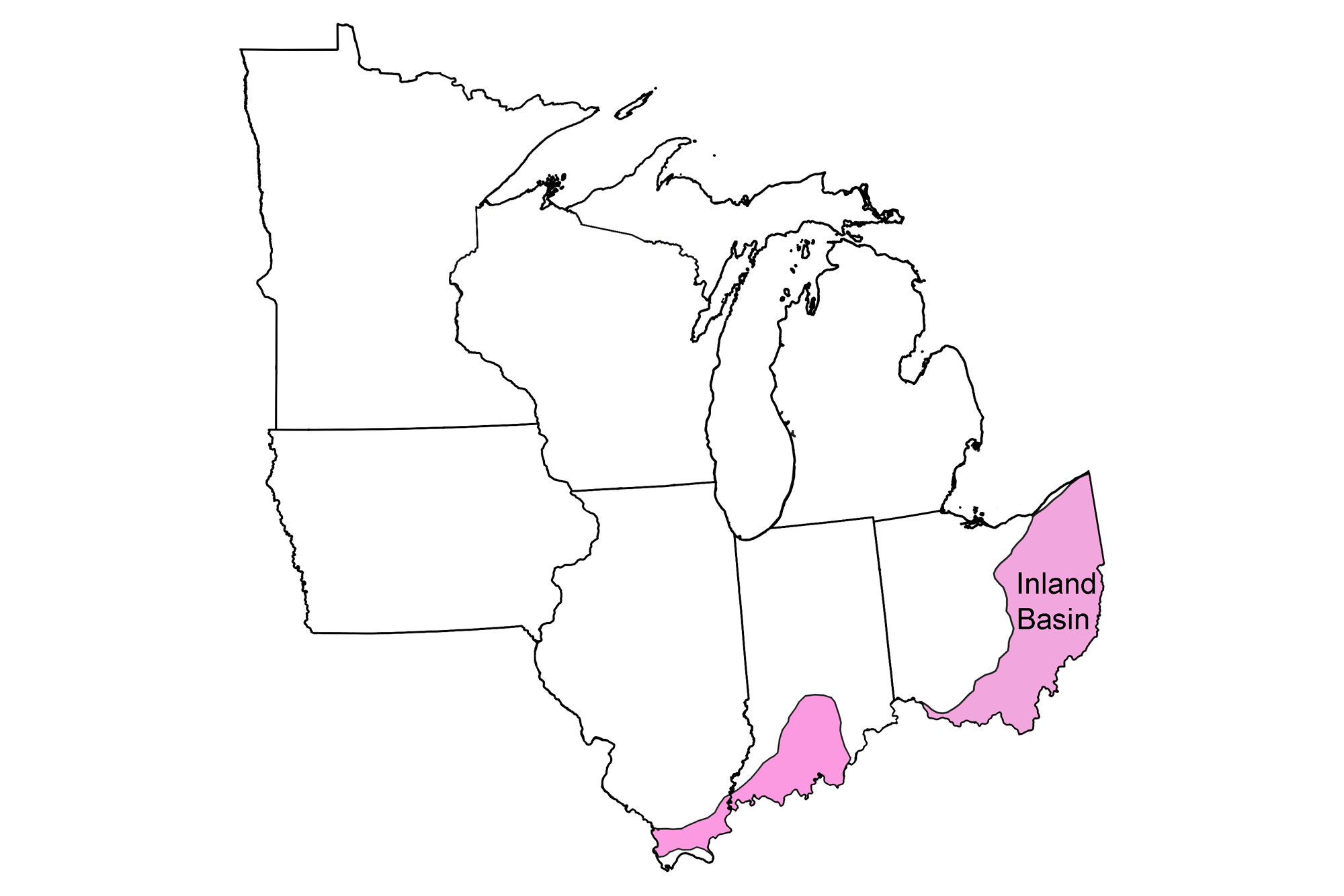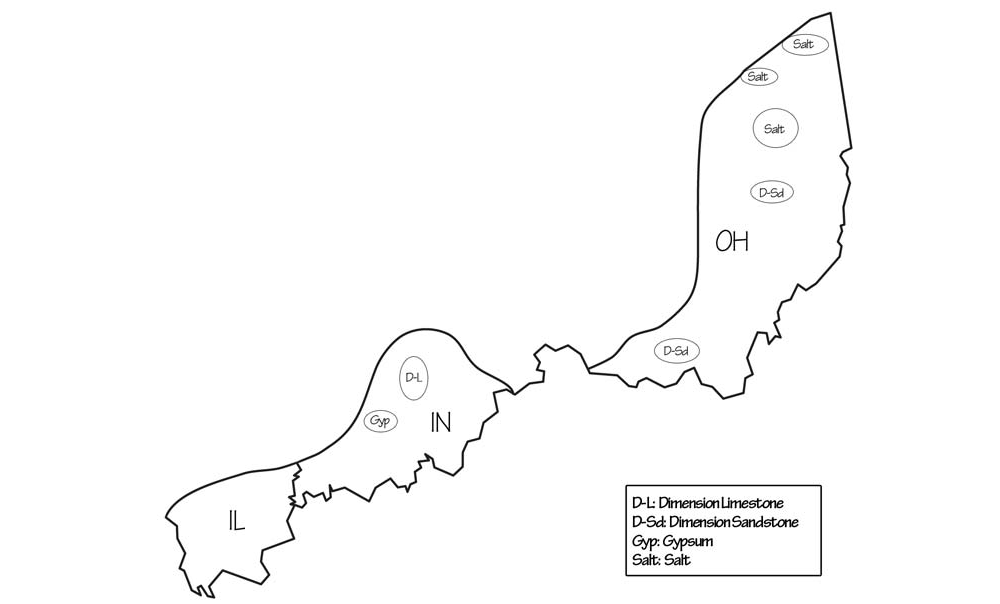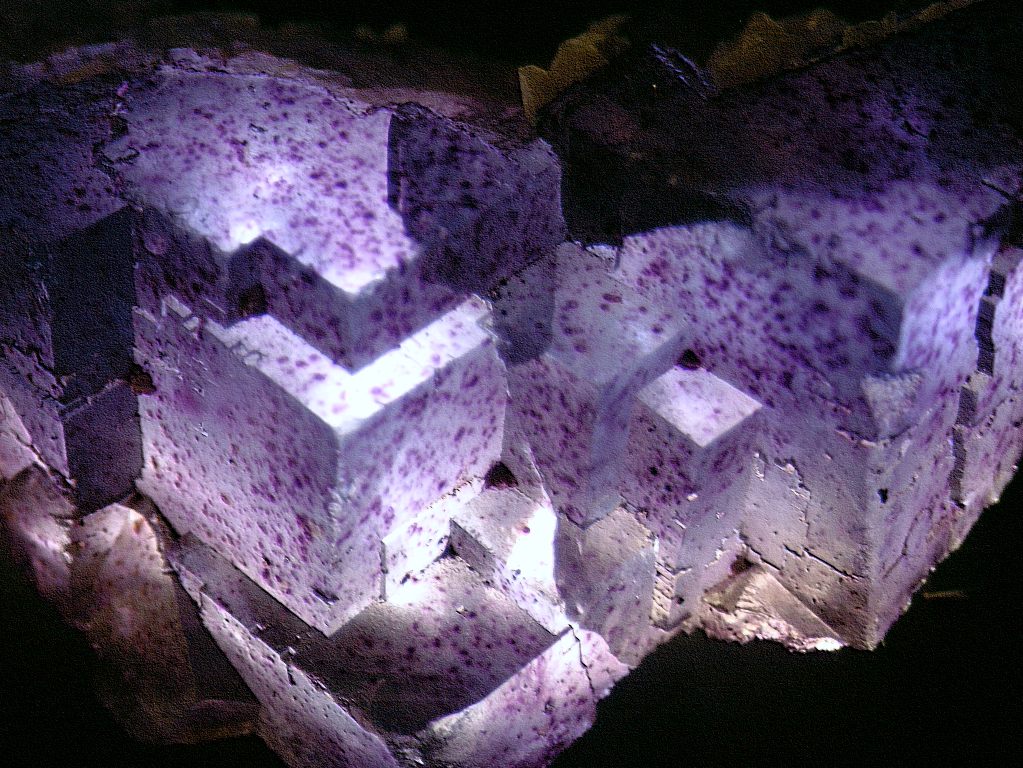Snapshot: Overview of the mineral resources of the Inland Basin region of the midwestern United States, including Iowa and portions of southern Illinois, southern Indiana, and eastern Ohio.
Topics covered on this page: Overview; Resources.
Credits: Most of the text of this page is derived from "Mineral resources of the Midwestern US" by Alex F. Wall, chapter 5 in The Teacher-Friendly Guide to the Earth Science of the Midwestern US, edited by Mark D. Lucas, Robert M. Ross, and Andrielle N. Swaby (published in 2014 by the Paleontological Research Institution). The book was adapted for the web by Elizabeth J. Hermsen and Jonathan R. Hendricks in 2022–2023. Changes include formatting and revisions to the text and images. Credits for individual images are given in figure captions.
Updates: Page last updated August 4, 2023.
Image above: Sample of flourite from southern Illinois, approximately 6 inches across. Photograph by Timothy K. Hamilton (Flickr; Creative Commons Attribution-NonCommercial-NoDerivs 2.0 Generic license).

Overview
Because the Inland Basin is represented in a relatively small area in the Midwest and its rocks are not particularly rich in minerals, this region contains little in the way of exploitable mineral resources. The ancient seas of the Mississippian Subperiod of the Carboniferous, during which the rocks formed, provided some evaporite minerals, but they are commercially viable to mine in only a few places. Rock salt is mined in northeastern Ohio, beginning in Cuyahoga, Lake, Wayne, and Summit Counties, and sometimes going deep under Lake Erie. Farther south, Licking County also produces salt. The only other mineral resource produced in the Inland Basin of the Midwest is in Martin County, Indiana, where gypsum is mined.

Principal mineral-producing localities in the Inland Basin, associated primarily with Paleozoic deposition of sand, carbonate sediments, and occasionally evaporates in the warm shallow continental seas fi lling the Appalachian Basin. Adapted from 2009 USGS State Mineral Info (public domain).
Mississippian rocks in Illinois host Illinois’ state mineral: fluorite (CaF₂). During the Jurassic, more than 100 million years after the limestone bedrock was laid down, geothermally heated water full of dissolved chemicals was forced through existing cracks. Fluorite crystals precipitated onto the walls of these cracks, forming Illinois’ famous deposits. Fluorite is mined primarily to be converted into hydrogen fluoride (HF), a dangerous acid with a wide range of applications. While colorful and translucent, fluorite is too soft to see extensive use as a semiprecious gemstone (see image at top of page).
Resources
Resources from the Paleontological Research Institution
Digital Atlas of Ancient Life: Minerals (collection of 3D models on Sketchfab): https://skfb.ly/6WxTo
Digital Encyclopedia of Earth Science: Minerals: https://earthathome.org/de/minerals/



